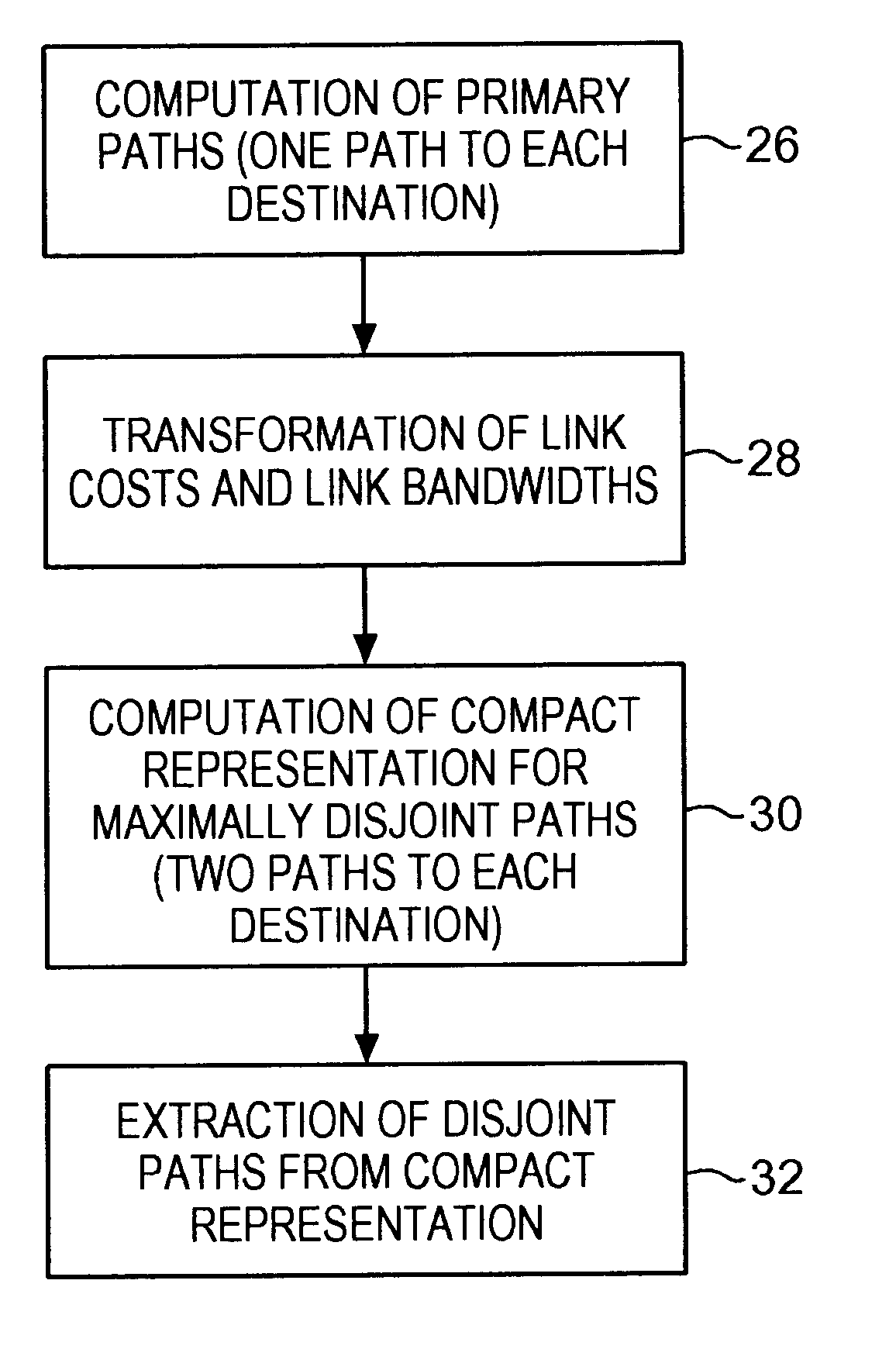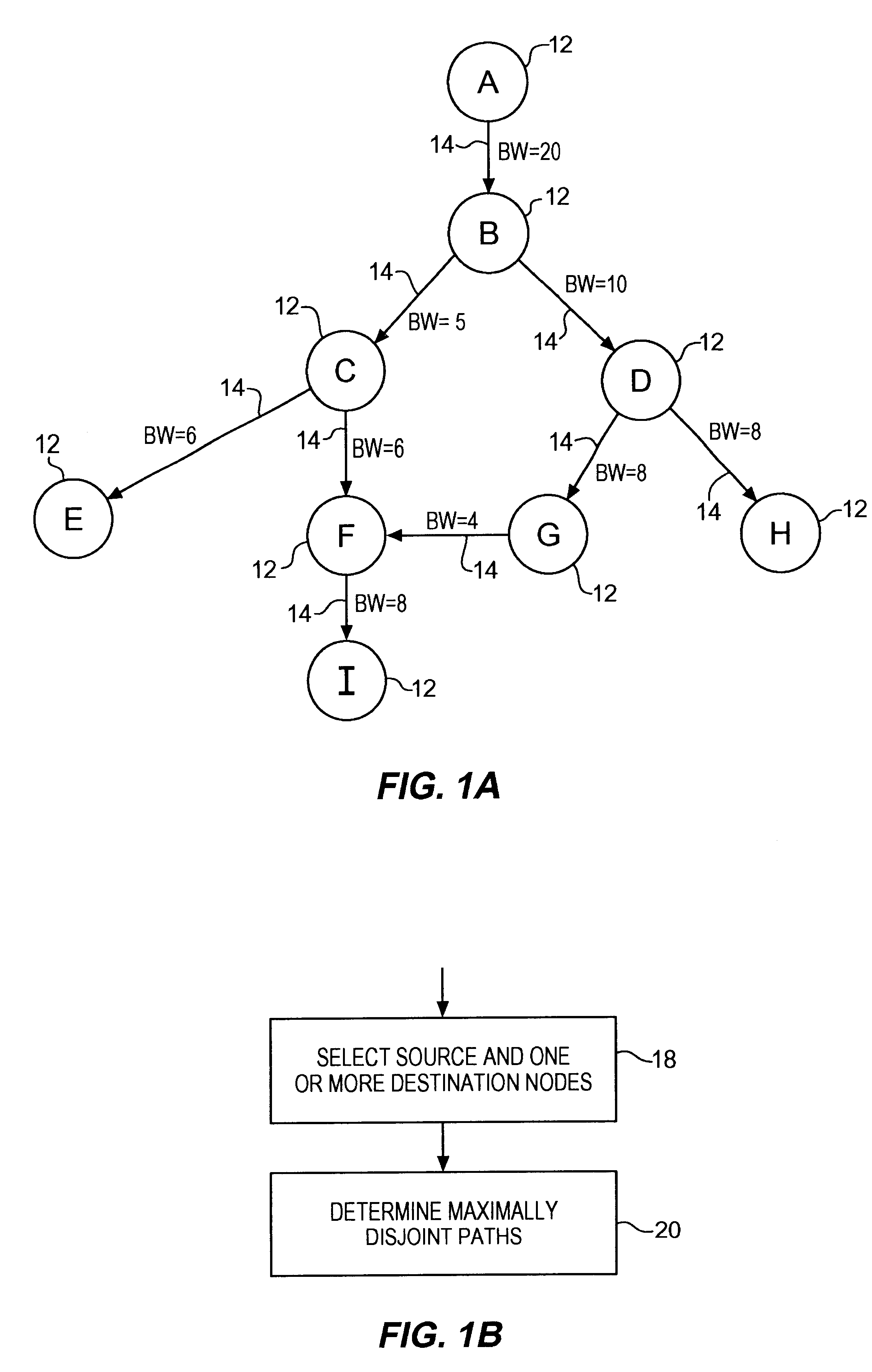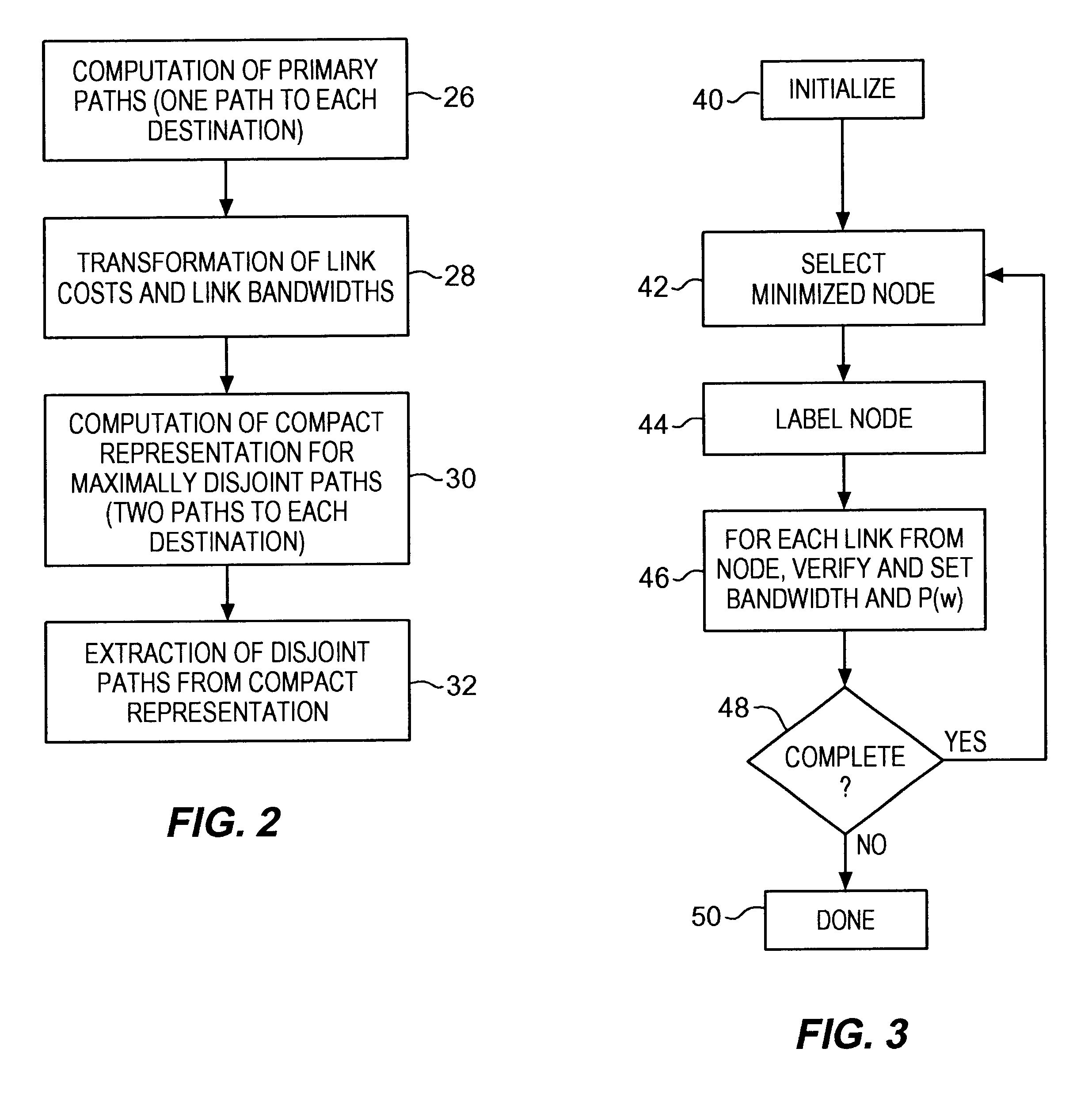Communications network system and method for routing based on disjoint pairs of path
a communication network and path technology, applied in the field of communication network routing based on disjoint pairs of paths, can solve the problems of large running time of the method, inability to guarantee the computation of an alternate path, and algorithm does not yield any outpu
- Summary
- Abstract
- Description
- Claims
- Application Information
AI Technical Summary
Benefits of technology
Problems solved by technology
Method used
Image
Examples
Embodiment Construction
of the Algorithm
In one preferred embodiment, at least one pair of maximally disjoint paths and a primary path are determined. Referring to FIG. 2, a flow chart diagram of one embodiment for determining and outputting a plurality of paths, including maximally disjoint paths, in accordance with the present inventions is shown. The algorithm represented by the flow chart is processed at each source node 12.
In step 26, a path is determined to each node 12, generating a tree of primary paths. The primary paths are determined from the topology of network 10 and information representing various network parameters, such as delay and bandwidth for each link 14.
In step 28, the costs metric, such as delay, and the bandwidth associated with each link 14 is transformed. The transformation provides bandwidth and cost metric data representing entire paths for step 30.
In step 30, maximally disjoint paths are determined and contained in a compact representation. The maximally disjoint paths are dete...
PUM
 Login to View More
Login to View More Abstract
Description
Claims
Application Information
 Login to View More
Login to View More - R&D
- Intellectual Property
- Life Sciences
- Materials
- Tech Scout
- Unparalleled Data Quality
- Higher Quality Content
- 60% Fewer Hallucinations
Browse by: Latest US Patents, China's latest patents, Technical Efficacy Thesaurus, Application Domain, Technology Topic, Popular Technical Reports.
© 2025 PatSnap. All rights reserved.Legal|Privacy policy|Modern Slavery Act Transparency Statement|Sitemap|About US| Contact US: help@patsnap.com



